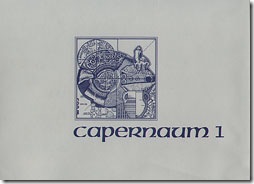Today only (and maybe also May 7 am?) at Eisenbrauns:
Excavations at Capernaum, Volume 1: 1978-1982, edited by V. Tzaferis, Eisenbrauns, 1989.
List Price: $99.50
Your Price: $39.80
You save: $59.70 (60%)
This is the first of the final reports on the excavations conducted by Israel’s Department of Antiquities and Museums, the Greek Orthodox Church, Notre Dame University, Averett College and Southwest Missouri State University at the site owned by the  Greek Orthodox Patriarchate of Jerusalem. The first five seasons have yielded not only much ceramic and numismatic material, but also a rather satisfactory stratigraphic sequence, providing a continuity of some 400 years, from the early 7th century to the early 11th century A.D. The findings are illustrated by eight full-color plates and 14 foldout plans.
Greek Orthodox Patriarchate of Jerusalem. The first five seasons have yielded not only much ceramic and numismatic material, but also a rather satisfactory stratigraphic sequence, providing a continuity of some 400 years, from the early 7th century to the early 11th century A.D. The findings are illustrated by eight full-color plates and 14 foldout plans.
These findings are of special importance for their contributions to Late Byzantine and Early Arab pottery, and Umayyad gold coins and for the new light they shed on literary evidence pertaining to Capernaum.